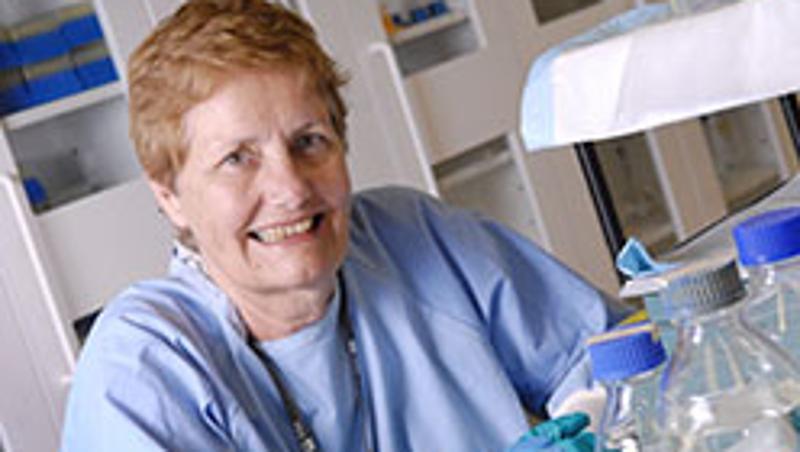
QUT scientists are making significant inroads into our understanding of the deadliest form of ovarian cancer after identifying two enzymes that make it resistant to chemotherapy.
Distinguished Professor Judith Clements said serous ovarian cancer spreads rapidly throughout the abdominal area and ultimately becomes resistant to chemotherapy treatment.
"This form of cancer is incredibly aggressive, moving quickly from the ovaries to the abdominal cavity where the tumour cells aggregate or clump, become embedded in the wall of the abdomen and then grow at quite a rapid pace," she said.
"While chemotherapy will often work initially, this form of cancer has found a way of beating the current chemotherapy drugs and quite quickly becomes immune to treatment.
"So our research is tackling the cancer on two fronts to better understand how cancer cells aggregate and survive in the ascites fluid that accumulates in the abdomen and why it is resistant to chemotherapy.
"Funding from Cancer Council Queensland is assisting with this research."
Professor Clements said her team had developed 3-D models of the cancer using cancer cells to mimic and better understand how the cancer behaves while in the abdominal cavity.
They are one of only a few groups of scientists in the world working with 3-D modelling for ovarian cancer.
"Our 3-D modelling in test tubes replicates the cancer cells' behavior and under microscopic conditions we can see how it works and our understanding of the cancer has greatly improved.
"We have also identified two enzymes that when present in a tumor make the cancer resistant to chemotherapy. We are one of two groups in the world working on these enzymes at the cellular biological level in ovarian cancer.
"This is a very significant step forward because once we know how and why ovarian cancer is resistant to chemotherapy we can then work on possible solutions."
Professor Clements said her team, located at Brisbane's Translational Research Institute (TRI) was already working with Associate Professor Jonathan Harris at QUT's Institute of Health and Biomedical Innovation (IHBI) who had developed a drug which in laboratory testing, had been found to inhibit the identified enzymes.
"This is potentially a major milestone in the road to the development of better treatment for this disease. We will continue to work with Professor Harris to develop a clinically effective version of this drug and test the drug in our lab before moving to animal and ultimately human trials," she said.
"We know that we are making incremental yet significant advances to combat this most aggressive form of cancer."
In Queensland each year, around 248 women are diagnosed with ovarian cancer and about 137 women die from the disease.
Cancer Council Queensland spokesperson Katie Clift said the ovarian cancer was often diagnosed after it had spread, reducing the chances of survival significantly.
"If ovarian cancer is treated when confined to the ovaries, 93 per cent of patients will be alive in five years," Ms Clift said.
"If the cancer spreads to surrounding tissue or organs, only 39 per cent of patients will be alive after five years. If the cancer spreads more distantly, the figure drops to just 30 per cent of patients who will survive five years after diagnosis."
TRI, the future in biomedical research, combines the expertise of four leading research institutes: The University of Queensland Diamantina Institute (UQDI) and Faculty of Health Sciences School of Medicine (SOM), Queensland University of Technology Institute of Health and Biomedical Innovation (IBHI), Mater Research and Princess Alexandra Hospital Centres for Health Research (CHR), along with health partner, DSM Biologics.
Media contact: Rose Trapnell, QUT media team leader, 07 3138 2361 or 0407 585 901 rose.trapnell@qut.edu.au


